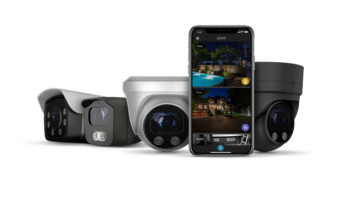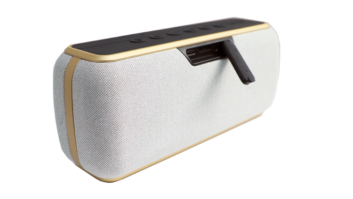As a change of pace this month, I thought it might be nice to have an object lesson of sorts. Lately, it seems like I have been inundated with projects where people want to install front projectors in applications where they have no business going. Case in point: I was recently handed a design where the ceiling was white, the walls were light green, and the floor was light beige. Optical design for a high-performance screening room requires a special skill set, but there are some basics that everyone should understand.
The Rubiks Cube of Color
For this little object lesson to work, youre going to need the assistance of a PC with an Internet connection and Microsoft PowerPoint. (If you dont have the latter, perform a Web search for free PowerPoint Reader and download the viewer from Microsoft.) Once you have the necessary hardware and software, go to www.pmiltd.com/downloads.html and download the PowerPoint presentation file under Optical Illusions. Open it, and switch to Slide Show mode (you can just press F5).
The first slide should be a large cube consisting of multi-colored tiles set against a black and white checkerboard background. (If you dont see this slide, make sure you are viewing in Slide Show mode. Press the Up Arrow Key repeatedly until you see the cube.) For this part of the lesson, take particular note of the dark brown tile in the top of the cube and the light orange tile in the side facing you. Theyre definitely not the same color, right? Press the Down Arrow Key once to advance to the next slide. A black mask has covered everything but those two tiles. Look at them now.
No fair! We changed the light orange tile to brown…right? Wrong. The light orange tile was brown all alongexactly the same color as the brown tile in the top. Your eyes were deceived into believing the tile was orange because of all the other colors surrounding it. When they were removed, your eye was able to tell that both tiles are brown.
Heres the application to screening room design. If the walls are bright or light colors, they will have the same effect on the screen that the cube of color had on that brown tile. The colors will look wrong to the viewers eyes even if they measure correctly on scopes and meters. Theres nothing you can do to compensate for this except to change the color of the room.
This begs the question: What color should the room be? Everyone knows black or very dark gray is the correct answer, but no client will go for that. So target three things: dark, neutral, and flat. Color is OK in a screening room, but make sure its really dark or tends toward neutral gray (e.g. blue-gray), and by all means use flat, not gloss paint. I have found that dark blue works well, perhaps because green and red influence skin tones. (Skin tones, which tend toward yellow, are comprised of green and red light.)
Dynamic Range Checkerboard
Back to the slide show. After reading the text on the next slide, move on to the two slides that are solid white and solid black. (Note: You must connect your PC to a front projector for this next part to work properly.) Pay special attention to how bright or dark the black field is. Now, advance to the black and white checkerboard slide. Look at the luminance level of the black tiles. Are they just as dark as the black field? If youre viewing on a front projector in a light-colored room, the resounding answer will be NO!
The black tiles will look less dark than the black field. The light from the white tiles is bouncing off room surfaces and landing back on the black tiles, washing them out.
The lesson here is that light-reflective room surfaces ruin dynamic range, which is the difference between the brightest white and the darkest black that the video system can produce when displaying actual program material composed of light and dark content. If a client insists on light-colored walls, youre really better off switching to a very large plasma or LCD monitor. Dont hesitate to tell them that, either, because it may be more in line with what they want. Generally, people who truly want screening rooms dont mind the dark look.
Hang on to Your Cookies
Now advance to the last slide. What you should see is a checkerboard pattern with offset black and white tiles. (Dont stare at it too long or you may get sick.) The horizontal lines running between rows of tiles are not parallel to each other…or are they? Shift off axis to one side of the screen or the other. Magic! The horizontal lines now look parallel.
What does this teach us about screening room design? Actually, nothing. Its just a cool optical illusion. However, it does emphasize the point that your eyes can be fooled. What you put around the picture and in the room with the picture have a major impact on the picture. You cant arbitrarily take a room, throw in some nice projection hardware, tune the image, and assume its going to look right. Just as with acoustic design, the room matters. It matters a lot.
Chase Walton contributed to this article.







